11.28.13
Posted in GNU/Linux, Hardware at 7:58 am by Dr. Roy Schestowitz
Rebranding and plurality
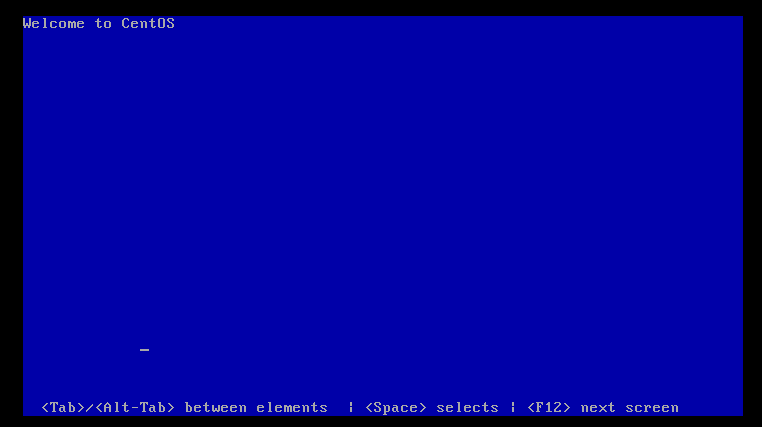
Summary: The back end of enterprises is being accommodated by more and more brands, not just in software but also hardware
Supercomputers are the area most prominently ruled by GNU/Linux. GNU/Linux has bragging rights in this area [1] and the press should not shy away from GNU, as it so habitually does [2]. There are companies built around this area [3] and they ensure development of faster and more potent file systems. It should not be surprising that GNU/Linux also expands to other heavy-duty datacentre tasks such as communications [4] and web servers [5].
It should be noted that something rather fascinating is happening as a result of GNU/Linux expansion in the server side. Whereas Windows mostly sustained x86 monoculture, with GNU/Linux we see expansion to Power, ARM, and many more minority architectures (some are dying breeds). Based on [6-9], big GNU/Linux distro makers now target ARM, which tends to be more energy-efficient and “ethical” than x86 (Intel is a corrupt company).
In a sense, GNU/Linux domination in the back room is contributing to the elimination of not just software monopolists but also hardware monopolists. █
Related/contextual items from the news:
-
-
-
Cray’s expert storage solutions are now available for popular x86 Linux clusters. Cray Cluster Connect (C3) offers a complete Lustre storage solution for x86 Linux. C3 brings Supercomputing-class scalability to data- and I/O-hungry Linux clusters.
-
Univention GmbH, one of Europe’s leading suppliers of Open Source products for the cost-efficient operation and efficient administration of IT infrastructures (www.univention.de), has now launched Release 3.2 of its enterprise Linux distribution Univention Corporate Server (UCS).
-
-
Boston Limited has announced a new server based on ARM processors and certified to run Ubuntu Linux 13.10, a move that could further stir up growing interest in ARM servers.
-
-
-
Permalink
 Send this to a friend
Send this to a friend
11.27.13
Posted in GNU/Linux, Kernel at 10:45 am by Dr. Roy Schestowitz
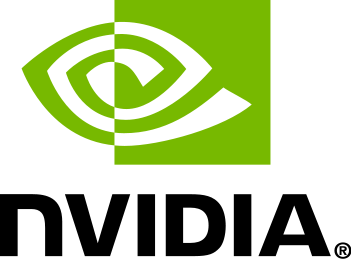
Summary: NVIDIA’s drivers still cannot be trusted and NVIDIA’s assurance of performance improvements isn’t enough
NVIDIA, the world’s most proprietary GPU maker (which artificially cripples Linux drivers), is trying to appeal to gamers on GNU/Linux [1], perhaps with some performance gains [2] but hardly with any source code. NVIDIA, which already left back doors in Linux some years ago (severe flaw in the driver), should try harder than that. Freedreno [3] recognises the value of source code, Mesa 10.0 is coming [4] with an open door to public participation [5], and even Intel, the company behind restricted boot through UEFI, is giving source code to buyers of physical hardware [6]. There is nothing detrminetal when it comes to releasing source code to accompany hardware one sells (hardware which requires placing binaries in one’s computer with ‘root’ privileges). NVIDIA should wake up already and become respectful to software freedom, or at least those who want reassurance that NVIDIA’s blobs are not just Linux back doors. We already know that the NSA wanted back doors in Linux and it was eager to even bribe companies to help achieve this. NVIDIA is an American company.
Those who chastised Richard Stallman for rejecting proprietary components in his computers have hopefully changed their views after the NSA leaks/scandals. █
Related/contextual items from the news:
-
-
-
The Freedreno open-source graphics driver project that’s a clean-room reverse-engineered implementation of the Qualcomm Adreno graphics core on the company’s ARM SoCs keeps reaching new milestones. While the driver is mostly just worked on by Rob Clark and without any support from Qualcomm, it’s quickly becoming the flagship open-source ARM graphics driver for the Linux desktop.
-
-
If you really want to contribute to Mesa you should at least have some C\C++ experience, if you don’t buy yourself a book and go for it. Knowledge of OpenGL would also obviously be useful The OpenGL SuperBible is generally the most recommended book on OpenGL.
-
Intel’s open-source Linux graphics driver for supporting Broadwell is continuing to move along ahead of the availability of the new Intel processors in a few months time.
While Intel only open-sourced the Broadwell graphics driver changes earlier this month and began pushing the code forward into the Linux kernel, Mesa, libdrm, and xf86-video-intel drivers, the support is moving along nicely.
Permalink
 Send this to a friend
Send this to a friend
Posted in GNOME, GNU/Linux, KDE at 10:22 am by Dr. Roy Schestowitz
Now is the time to abandon Windows and dodge Microsoft trespassing
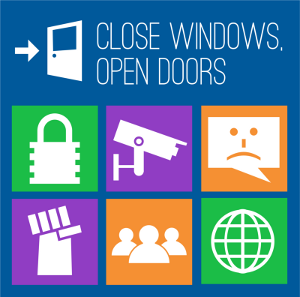
Summary: The world’s most features-rich desktop is coming to a milestone which represents expansion to yet more form factors
KDE SC is approaching its 12th KDE4 release [1], which brings further improvement [2] not just for desktops [3]. KDE has become a platform for tablets and perhaps phones, not just desktops and laptops. Even home media centers are an area of focus and in places like CERN KDE gets uses scientifically as a kind of server/experiments front end. Based on what we’ve seen on the Web, these efforts from KDE are all fruitful and people are increasingly satisfied with KDE, even those who used to dislike it. Development of KDE continues [4] even if some KDE/Qt applications lose momentum [5] (they cannot die, in part owing to the licence) and new GNU/Linux releases continue to show signs of confidence in KDE; even the bad guys use KDE [6]. GNOME has a new release too [7] and it brings significant improvements [8], which helps show that a decade and a half down the line these two leading desktop environments can coexist and mutually thrive. Now is an excellent time to migrate to GNU/Linux. It’s mature, it’s reliable, it is easy to use, and it’s user-respecting. People no longer should assume that Microsoft is inescapable. █
Related/contextual items from the news:
-
KDE has released the third beta of the 4.12 versions of Applications and Development Platform. With API, dependency and feature freezes in place, the focus is now on fixing bugs and further polishing. Your assistance is requested.
-
The third beta of KDE 4.12 was released this week, but for those that missed the news only really are the 4.12 apps being improved in this next KDE desktop release.
-
Plasma Media Center, the KDE project to slowly take on the likes of XBMC and provide a nice user-interface for multimedia tasks atop the KDE experience, is up to version 1.2 beta. The 1.2 beta release of Plasma Media Center is packing a number of new features.
-
-
While there’s many Kdenlive fans out there for the KDE-focused open-source video editor, it seems new development efforts around the project have ceased.
-
-
-
Permalink
 Send this to a friend
Send this to a friend
11.26.13
Posted in GNU/Linux, Kernel at 11:25 am by Dr. Roy Schestowitz
Funding still provided in exchange less benign agenda than easy printing (e.g. restricted boot, TPM, Tivoization)

Summary: The Linux Foundation is starting another “Membership Drive”, which seeks to collect money from people rather than from massive corporations
AS we have pointed out on numerous occasions before, the weakness of the Linux Foundation is that it’s very open to businesses, which also makes it vulnerable to entryism, even by Microsoft and companies it takes over. Just watch this latest Microsoft marketing/revisionism from Mary Jo Foley at ZDNet/CBS, trying hard to matchmake FOSS and Microsoft.
In order for the Linux Foundation not to merely serve agencies like the NSA through Intel, IBM and other NSA collaborators (some of which receive money from the CIA to do this) we need to hope for a people-run Linux Foundation. This requires changing the financial strings. Community influence (people, not corporations) can only ever come through money, as sad as it may seem, and to the Linux Foundation’s credit, it does come out with an appeal for people’s money [1,2,3] (original post in [4]). Whether a donation would be wise to give is rather hard to tell; the FSF, for example, is already people-leaning, whereas with the Linux Foundation it’s doubtful and it may be too late for the attached strings to be undone. Just watch how OIN, for instance (another corporations-funded front), welcomes surveillance companies into its ranks. A serious privacy violator, Dropbox, is now in there too. As a Microsoft booster put it: “The Open Invention Network (OIN) has revealed Dropbox is its latest licensee, potentially shielding the cloud document-sharing service from patent attackers.”
When it comes to defending the voice of people, “Linux Voice” should be a good choice [5]. It’s about service, not just profits. If “Linux Voice” is like independent press, then think of the Linux Foundation as the corporate press, appeasing and appealing to businesses in order for them to provide financial support (with strings attached of course, as businesses are not charities).
The Linux Foundation is a good organisation, but if it becomes increasingly dependent on funding from companies with weak/no ethics, then we have a real problem in our hands. █
Related/contextual items from the news:
-
In honor of the open-source operating system’s longtime penguin mascot, the Linux Foundation is taking a conservation-friendly approach to its latest membership drive.
-
-
You can help two birds with one donation this holiday season. The Linux Foundation, the non-profit organization dedicated to accelerating the growth of Linux and other open-source collaborative development projects such as OpenDaylight, announced its 2013 Holiday Individual Membership Drive. In it, the group will donate $25 to the World Wildlife Fund for emperor penguins for every new member who joins, today through 11:59 PM. PT on December 10, 2013.
-
The Linux Foundation today is kicking off its Holiday Individual Membership Drive. We will be donating $25 to the World Wildlife Fund for the emperor penguin for each individual member who joins The Linux Foundation today through December 10, 2013.
-
Our plan to give 50% of our profits back to the community has got a lot of people talking. Everyone likes the idea, but some people are wondering how it’s going to work. It’s important to note that this plan isn’t just a short term gimmick — no, it’s a crucial part of what Linux Voice will be about over the years. A thriving Linux and Free Software community is good for all of us!
Permalink
 Send this to a friend
Send this to a friend
11.25.13
Posted in GNU/Linux, Kernel, Microsoft, Security, Ubuntu, Virtualisation at 4:14 am by Dr. Roy Schestowitz
We need Freedo

Summary: Involvement in Linux development from the NSA and close corporate partners means that in order to restore real trust some code may need washing away (Linux-libre style)
THE news last week claimed that the US Defense Department was embracing FOSS [1,2]. We already know that it uses RHEL extensively and this may actually have strings attached to it. See, there is always aspiration to put control of the software at the hands of US corporations (and by extension bureaucrats who can compel those corporations to comply with surveillance desires); for others, there are back doors.
The other day we saw how a leading GNU/Linux vendor worked to promote and to spread UEFI ‘secure boot’, which is all about remote control (unless the signatures are maintained by the physical owner of the computer). UEFI ‘secure boot’ — like TPM — is about control by remote entities like Microsoft. Never forget that man from Microsoft (who still lives around there) manages Ubuntu now. Another man from Microsoft is now speaking on behalf of a Linux Foundation project (there are other people, but he is their manager). This really is a cause for concern because even “Linux” technologies are turning somewhat hostile towards users. When companies like Intel and IBM call the shots and when companies like Red Hat try to appease the Pentagon we just simply cannot assume that Linux will remain user-serving (as a matter of priority).
There are some news these days about Italy [3,4], Switzerland [5] and several other European nations moving to Free/Open Source software (this may include GNU/Linux) for control and autonomy, but they should keep a close eye on those who steer Linux development (and the government they lobby to oversee them amicably in particular). Yesterday when I had a discussion about this subject someone suggested embracing Hurd, but I on the other hand thought that perhaps Linux-libre should start removing NSA-sourced components (if they can be traced back to the NSA, as it is not just SELinux and some was submitted by @redhat.com addresses) and other suspicious or user-hostile code.
Even as Linux advocates we should recognise that there is a diversity of interests and the agenda of the NSA is to spy on everything and everyone, not to protect our privacy and security. █
Related/contextual items from the news:
-
As far as technology trends in the federal government go, the use of open source is on a multi-year hot streak. Alongside movements such as the cloud, open source is one of those agency options like an oasis – or perhaps a mirage — in a funding desert, promising savings and efficiencies.
-
The Defense Department, looking for ways to cut costs and share information, is slowly but surely embracing open source software, sister publication FCW’s Amber Corrin reports.
“The problem with proprietary solutions is the limited set of folks who can use them, rather than opening the core components to the community to drive…and just be the experts and the integrators,” Andy Goodson, program manager for Lockheed Martin’s Distributed Data Framework, told FCW. DDF is a newly open source software search engine for intelligence.
-
It’s no hidden fact that the European Union has a special love for free and open source software for all the merits these have to offer and for the huge cost savings EU’s various organizations get to make from these. In the past, several member countries have made the switch from Windows to Linux in a drive to make their systems more secure and save costs. Their governments and educational institutions have also moved on from using proprietary and expensive day-to-day software such as Microsoft Office to using OpenOffice and LibreOffice, software that get the same work done and are absolutely free. Now it is Italy’s turn to follow on the same path.
-
We take a first reading of the recent modification to the fundamental law that governs the digital aspects of the Public Administration in Italy. These modifications require Public Administrations to prefer internally made solutions and FOSS solutions over proprietary ones, mandate an increased degree of interoperability and strengthen the push for open data.
-
Lausanne, Switzerland’s fourth-largest city, is considering a switch to open source desktop PCs. “The time has come to evaluate a migration, by launching a pilot project on 5 workstations”, the city announced on 14 November. “Free and open source software is becoming more mature, user-friendly and compatible with other environments.”
Permalink
 Send this to a friend
Send this to a friend
11.23.13
Posted in Debian, GNU/Linux at 6:46 pm by Dr. Roy Schestowitz
Ian’s ‘baby’ keeps on giving and spreading freedom

Photo from Ilya Schurov, Computerra Weekly
Summary: Bits of news about Debian and its extended family
Debian, the most widely used GNU/Linux distribution (on servers in particular), has a new bugfix release [1] and some exciting news about its impact (see “Debian increases its popularity on web servers” [2]). MATE is now becoming part of Debian [3] and the default init system is to be decided on [4]. Virtualisation is an area where Debian provides many choices [5] and for those who prefer a different (from default) desktop environment there is KDE as part of the default in Kwheezy, which received some positive reviews lately [6].
In many ways, owing to extensive repositories and lack of focus on just one particular market or purpose, Debian has got in it much of the best of GNU/Linux, including choice. It remains a leading choice in many enterprises. █
Related/contextual items from the news:
-
The Debian project announced the immediate availability for download of the eight maintenance release of the Debian 6 Linux operating system.
-
Bits from the Release Team
s390 removed from the archive in favour of s390x
manpages.debian.net now an official service
Debian increases its popularity on web servers
Other news
Upcoming events
New Debian Contributors
Important Debian Security Advisories
New and noteworthy packages
Work-needing packages
Want to continue reading DPN?
-
-
The leader of the Debian GNU/Linux project, Lucas Nussbaum, has announced that the question of which init system will be the default in the next release, Jessie, will be decided by the project’s technical committee.
-
-
Once the interface was pleasantly bland and once the additional services had been disabled, I found I slowly grew to like Kwheezy. The combination of the KDE desktop with a lot of useful software and Debian’s rock solid base is a winning formula. I certainly liked the Kwheezy installer and the basic concept behind its design. I would have enjoyed my time with the distribution a good deal more if it had a quieter interface and fewer features enabled out of the box. I feel a calmer desktop would be more in line with Debian’s design. In the end, I came around to enjoying Kwheezy, but only after I convinced the desktop to stop distracting me from my work.
Permalink
 Send this to a friend
Send this to a friend
Posted in GNU/Linux, Google at 6:22 pm by Dr. Roy Schestowitz
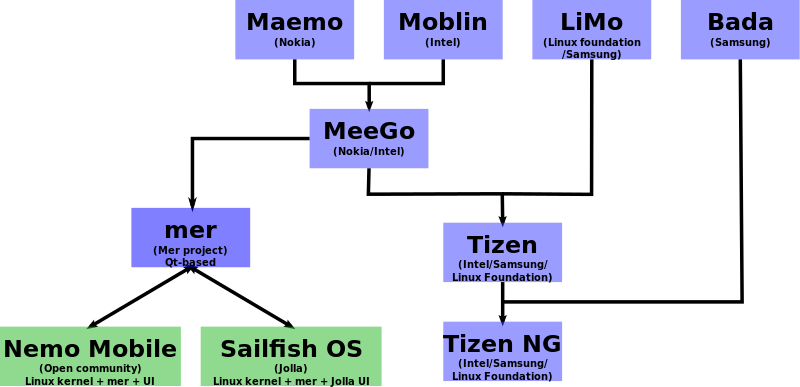
Summary: The projects that come from MeeGo (a Nokia-led project for the most part) pose a threat to Android’s domination in the area of mobile Linux
AS we pointed out the other day, Android is not the only game in town. Linux is being used in rival platforms and next week Jolla’s Sailfish OS phone will be unveiled [1]. It uses some MeeGo code, so it will probably have a lot in common with Tizen, which also “turns up in an IVI system and a fridge” [2]. The Linux Foundation says [3] that Tizen is doing well and the more competition we have in this space, the more pressure there will be on Google to open up [4]. Without competition, there will always be this threat that Google will just use “open” for marketing, not much beyond that.
By the way, word on the Web says that Jolla is not really “open”, let alone free, but it remains to be seen (4 days from now). █
Related/contextual items from the news:
-
Mobile newcomer Jolla has confirmed it will start selling its first smartphone at the end of this month, and it’ll be launched in Finland on a local network called DNA. The news comes from Jolla’s official Twitter account, but it wasn’t welcomed by everyone, as there’s no confirmation of when those who pre-ordered the phone will be getting their devices.
-
Close on the heels of the revelation that Samsung’s NX300M camera runs Tizen, this week saw an announcement by Nexcom of a developer-focused, Intel Atom-based automotive computer called the VTC 1010-IVI that supports the Tizen In-Vehicle Infotainment (IVI) stack, plus news of a Tizen-enabled Samsung smart refrigerator. Meanwhile, Samsung’s first Tizen phones are rumored to be under test at Korean mobile carriers.
-
Tizen has been described as everything from “a troubled child” to “dead in the water”, but analysts still believe it has the best chance of the four major open source mobile operating systems to make an impact on the global smartphone market.
It is an opinion that Brian Warner, who oversees the Tizen project for the Linux Foundation, would agree with as he believes the operating system is capable “of scratching an itch” that is unaddressed by other leading non-Android open source platforms – Firefox OS, Sailfish and Ubuntu Mobile.
Speaking to TechWeekEurope, he says the main advantages of Tizen is that it is truly open source and manufacturers can make alterations to the interface without affecting compliance and compatibility standards – unlike Android.
-
If you are among those who purchased a Developer Edition handset and want its bootloader unlocked to tinker with the operating system, this one goes out to you. Up until now, requesting such an unlock code would void the warranty for your Developer Edition device. But in an interesting step towards pleasing the developer and enthusiast communities, Motorola has introduced two big changes to its Developer Edition Program.
Permalink
 Send this to a friend
Send this to a friend
Posted in GNU/Linux, Servers at 6:07 pm by Dr. Roy Schestowitz
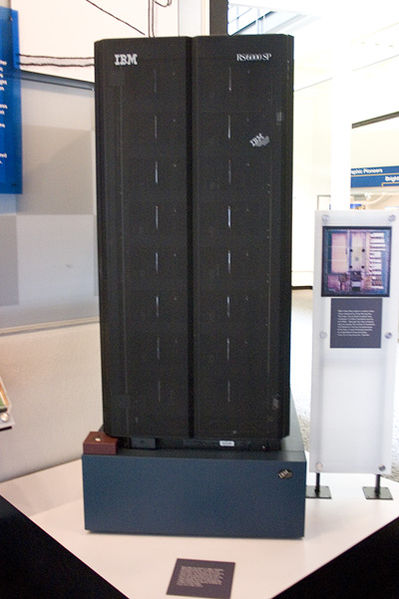
Photo by James the photographer
Summary: When it comes to the world’s top computers, GNU/Linux is virtually without any competition
It is GNU/Linux occupying 10 out of 10 (top 10) ‘super’ servers. The numbers are out and they show this, based on Green500 [1] and TOP500 [2,3], which has GNU/Linux everywhere but 18 computers in the top 500. If this isn’t a sign of GNU/Linux having clear technical superiority, what is? Decisions regarding expensive computers such as these are not made based on some sole Microsoft MVP or a clueless manager (I have seen this personally) who has a pact with Microsoft. █
Related/contextual items from the news:
-
The November 2013 edition of the Green500 List has be released, just two days after the TOP500 List.
Unlike the TOP500 List, which lists 500 of the worlds fastest supercomputers, the Green500 List lists the most energy-efficient supercomputers that made the TOP500 List. So for the Green500, it’s not about how fast, but how energy-efficient. That’s why China’s Tianhe-2, which topped the November 2013 TOP500 List, did not even make the top 10 of the Green500 List for the same month. Rather, it ranked number 41.
-
“Once the definition and code for the HPCG is in a stable condition we envision collecting results for it in parallel to the ongoing effort for the HPL benchmark,” said Erich Strohmaier, head of the Future Technologies Group at Lawrence Berkeley National Laboratories and Top500.org editor. “For the foreseeable future the TOP500 will be based on the HPL benchmark test but we would hope to provide additional value and information by collecting and publishing numbers for new benchmark such as HPCG as well.”
-
Supercomputing 13, which takes place in Denver this week, began with the announcement of the latest Top500 list of the world’s fastest computers and Nvidia’s release of the Tesla K40 accelerator.
-
The November 2013 edition of the list of the world’s fastest supercomputers has just been released. Known as the TOP500 List, it is released twice a year, first in June, then in November.
The TOP500 List began in June 1993, ran again in November of that year and has been repeated in that order since. The November 2013 edition is the 42nd.
This latest edition is not that much different from the previous edition, which was also topped by the Tianhe-2 supercomputer, which is built and maintained by China’s National University of Defense Technology. It retained its top spot “with a performance of 33.86 petaflop/s (quadrillions of calculations per second).” Folks, that’s fast, and impressive.
Permalink
 Send this to a friend
Send this to a friend
« Previous Page — « Previous entries « Previous Page · Next Page » Next entries » — Next Page »

























 Content is available under CC-BY-SA
Content is available under CC-BY-SA